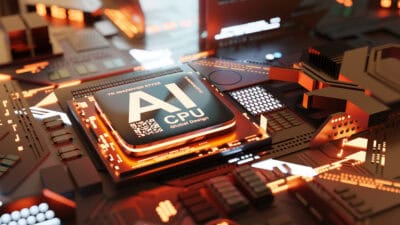HP‘s (NYSE: HPQ) stock recently fell to a new 52-week low after the company announced a major restructuring plan that will cut 7,000 to 9,000 jobs from its workforce of 55,000 over the next three years. HP expects the restructuring to generate $1 billion in annual savings by the end of fiscal 2022, but it will initially throttle its earnings growth with $1 billion in expenses.
As a result, HP expects to report a full-year GAAP EPS of $1.98-$2.10, compared to the consensus estimate of $2.18 and its EPS of $3.26 last year — which was significantly boosted by a big tax benefit. On an adjusted basis, which excludes the restructuring costs and other items, HP anticipates earnings of $2.22-$2.32 per share, which marks 10%-15% growth and matches analysts’ expectations.
HP’s announcement rattled investors since it came less than two months after the PC and printer maker issued soft fourth-quarter guidance and disclosed that CEO Dion Weisler would leave in January to attend to a family matter. I stated that I wouldn’t sell my shares at the time since HP’s core PC business remained stable, its free cash flow looked strong, and it paid a decent dividend. But I also noted that I wouldn’t add any more shares until its printing business stabilized and the trade headwinds waned.
HP’s latest announcement is forcing me to reevaluate that thesis. Let’s see why HP is laying off its staff, and if investors should consider the restructuring effort to be a red flag.
HP’s biggest problems
HP’s PC and printing businesses performed well throughout 2018, but the growth of both units decelerated significantly this year:
| YOY revenue growth | Q3 2018 | Q4 2018 | Q1 2019 | Q2 2019 | Q3 2019 |
|---|---|---|---|---|---|
| Personal Systems | 12% | 11% | 2% | 2% | 3% |
| Printers | 11% | 9% | 0% | (2%) | (5%) |
| Total | 12% | 10% | 1% | 0% | 0% |
YOY = Year-over-year. Source: HP quarterly reports.
HP’s personal systems (PCs and workstation) unit, which generated two-thirds of its revenue last quarter, struggled as its consumer unit dealt with longer upgrade cycles, competition from mobile devices, and Intel‘s CPU shortage. Fortunately, stronger sales of enterprise-facing commercial devices — which offered better security features and longer-lasting batteries — offset its consumer declines.
HP’s printing unit lacked that cushion. Sales of both consumer and commercial printers fell annually last quarter, due to long upgrade cycles in both markets and sluggish enterprise spending in the commercial market. Sales of the unit’s higher-margin supplies also fell as it faced competition from cheaper brands of generic ink and toner.

Image source: Getty Images.
Where will the job cuts hit?
HP expects its $1 billion in restructuring expenses to be spread out, with $100 million in the fourth quarter of 2019, $500 million in 2020, and the remaining $400 million split between 2021 and 2022.
HP didn’t offer any hints as to where the job cuts will hit. In the press release, it merely stated that the restructuring plan would “simplify its operating model” so it could become a “more digitally enabled company.”
I think the job cuts will hit the printing unit first, where operating margin fell 40 basis points annually to 15.6% last quarter as revenue declined. This unit acquired Samsung‘s (OTC: SSNLF) printer business and office supplier Apogee over the past two years, so incoming CEO Enrique Lores — who currently leads the printing unit — will likely look for ways to eliminate redundancies between its original and acquired businesses.
But that doesn’t mean HP will spare its personal systems unit. That unit’s operating margin rose 170 basis points annually to 5.6% last quarter, thanks to lower component prices (especially hard drives and memory chips) and tighter cost controls. But when component prices start rising again, HP will likely prioritize cost-cutting measures by laying off additional employees.
It’s not all bad news…
HP’s outlook seems bleak, but it still has irons in the fire. It’s beefing up its enterprise PC unit with new integrated security features, expanding its printing unit into the promising industrial 3D printing market, and countering generic suppliers with its Instant Ink subscription service, which generated “double-digit” revenue growth last quarter.
HP still expects to generate “at least” $3 billion in free cash flow in fiscal 2020 and plans to return over 75% of that total to shareholders via buybacks and dividends. It also raised its dividend 10%, which continues its annual streak of dividend hikes following its split with Hewlett Packard Enterprise (NYSE: HPE) four years ago.
HP’s restructuring plan is surprising in its magnitude, but investors shouldn’t panic and sell their shares yet. The moves were necessary to streamline its business after several acquisitions, and could help HP focus on fresh ways to grow while rewarding patient shareholders with buybacks and dividends.







